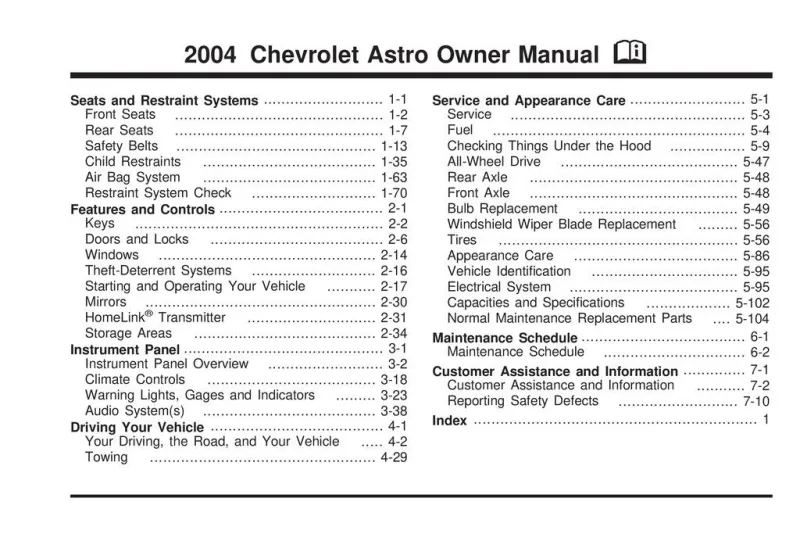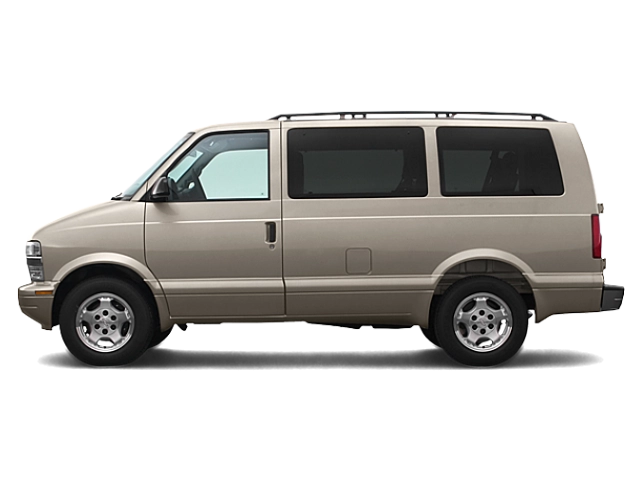2004 Chevrolet Astro Owner's Manual

Table of Contents
2004 Chevrolet Astro Overview
Introduction
The 2004 Chevrolet Astro is a versatile and reliable minivan that exemplifies family-friendly practicality with the performance of a robust workhorse. Known for its spacious interior and solid construction, the Astro remains a popular choice for those seeking a reliable vehicle that can comfortably accommodate both passengers and cargo. Built for both utility and comfort, it is perfect for family trips or transporting goods around town.
Powertrains
Under the hood, the 2004 Chevrolet Astro is powered by a 4.3-liter V6 engine that delivers a commendable 275 lb-ft of torque. This engine is paired with a smooth-shifting four-speed automatic transmission, providing adequate power for both city driving and highway cruising. With an output of 190 horsepower, the Astro offers a balanced driving experience while maintaining decent fuel efficiency for its class.
Trims
Features
The Chevrolet Astro boasts a range of features designed for convenience and comfort. Standard amenities include air conditioning, power windows, and an AM/FM radio with a cassette player. Optional features like a rear-seat entertainment system and a sound upgrade cater to families looking for extra entertainment on long drives. Safety features such as anti-lock brakes and traction control enhance the peace of mind while on the road.
Owner's Manual
The owner's manual for the 2004 Chevrolet Astro is an invaluable resource, offering comprehensive information on vehicle maintenance, usage guidelines, troubleshooting tips, and system features. It serves as a guide to ensure optimal performance and longevity, empowering owners to make the most of their driving experience.
User manual download
The Chevrolet Astro owner manual for the 2004 model year is to be found in PDF downloadable format on this page. The owner manual for the model year 2004 is free and in English, but the repair manuals are usually not easy to get and may cost more.
Manual Questions
Fill the form below and someone will help you!

